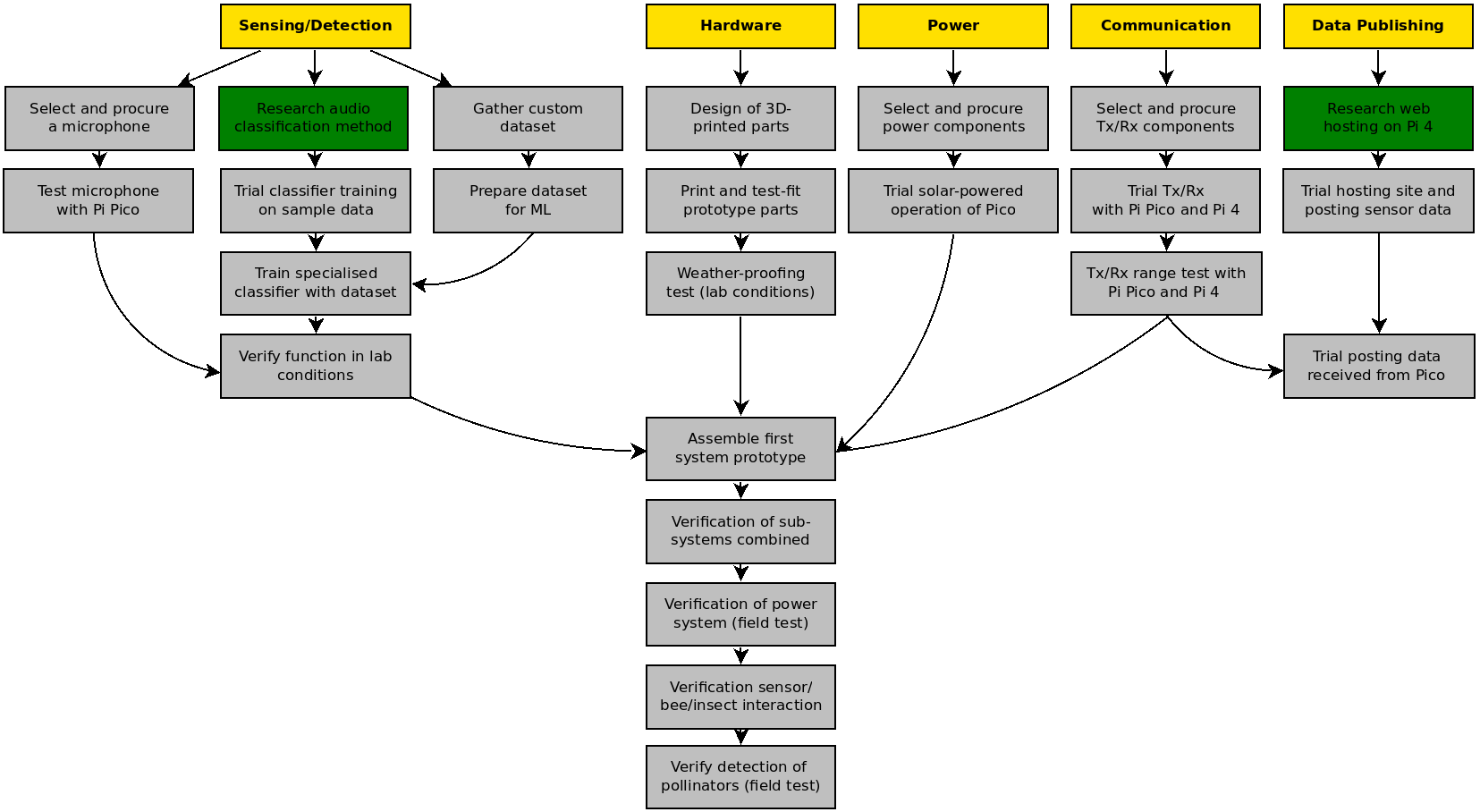Hello everyone! This is my first element14 Community Design Challenge and having read through the blogs of some previous challenges I'm really looking forward to seeing the range of interesting projects that will be submitted to this one. I was very happy that my own submission was chosen as one of the Challengers, and I will do my best to put the Pi to good use. I will keep as regular a blog schedule as I can, and please do leave a comment if there's anything you'd like to ask me. Best of luck to you with your projects too!
Pollinator Pollster (Powered by Pi)
Raspberry Pi (both the Pico microcontroller, and the eponymous Single Board Computer), bringing enormously capable computing at an accessibly low price point, has great potential in conservation to power different types of data collection systems. There are countless inspiring projects in the conservation space already utilising Raspberry Pi, but two I was most interested in were BirdNET-Pi, an audio classification system for identifying birdsong, using Raspberry Pi, and also π•pistrelle, a clever bat detector which embeds a Pi Pico.
For this competition, I was interested in developing a Raspberry Pi-based system for studying pollinators, especially bees.
Pollination of plants, including our food crops, is largely carried out by pollinating insects – which are therefore a cornerstone of the healthy functioning of our natural world. Pollinating insects are under threat from multiple causes including habitat destruction and the use of pesticides, and as a result there is presently enormous scientific interest in monitoring their populations.
The UK Pollinator Monitoring Scheme (PoMS) is the first project in the world to gather data on the population of pollinating insects on a national scale, and has been doing so since 2017 (UK PoMS, 2023). Their scientific approach, which is an excellent application of citizen science, relies on the contribution of numerous volunteers, who conduct surveys (either in their local area, or in pre-assigned 1km2 tracts of land).
In this project it is proposed to develop an automated remote monitoring system to detect pollinating insects via audio classification. Powered by Raspberry Pi, the system could provide 24/7 data from remote sites, which will permit scientists to augment human-collected data, aiding pollinator conservation.

System Concept
This pollinator monitoring system is intended to be deployed at a site such as a nature reserve, farm, or large garden, with multiple sensors allowing the monitoring of several locations within that environment. It is not expected that those sensors will have access to mains power. Minimising power consumption is key, with power generation being sourced from solar energy, with a battery system to permit operation when light intensity is low. Some pollinators are active at night, therefore the system is expected to be active 24 hours a day.
With that in mind, the Raspberry Pi Pico presents an ideal choice of microcontroller for the sensors themselves. Firstly, the Pico is extremely affordable, widely available, and has extensive support available online. Secondly, it has a relatively powerful processor for a microcontroller, and is proven to successfully run TensorFlow Lite for audio classification. Thirdly, the power consumption is very low, especially when compared to a Single Board Computer, hence it is more suited for operation in a solar-powered setup.
A microphone connected to the Pi Pico will constantly record audio, which in real-time will be processed by audio classifiers trained to identify pollinating insects. No recorded audio will be transmitted from the sensors, solely a report of which pollinator type has been detected, and when; these transmissions will be made using a RF transmitter module connected to the Pi Pico.
Receiving this data from the multiple Pico-powered sensors distributed through the studied habitat, a Raspberry Pi Single Board Computer (e.g. the Model 4B offered as the kit for competition challengers) is thought to be the optimum choice of base station. The Pi 4 will wirelessly receive information from the network of sensors, and will collate and publish this data. As the Pi 4 is able to operate as a web server, this is thought to be the most effective method of publishing the data live, and making it available to a researcher from any location. The Pi 4 is intended to be operated from a rangers’ hut/visitor centre/farm building, and therefore would have access to mains power and not require solar power.
This arrangement plays to the complimentary strengths of both the Pico and Pi 4, each specialised for their chosen roles in this monitoring system.
Overview Video
Project Plan
I created this process diagram to illustrate the key technical or testing steps in the project, and help me ensure I identify any critical paths. A couple of the blocks are already green as those stages are completed (and will be discussed in my next blog post). In theory by the project deadline all of the blocks will be green!

Thank you for reading, see you again soon.

